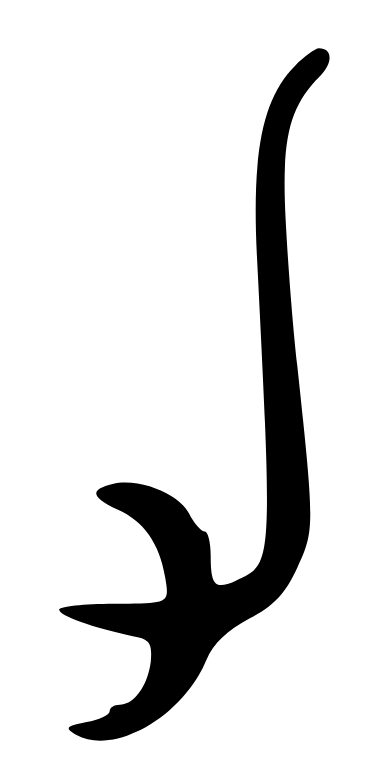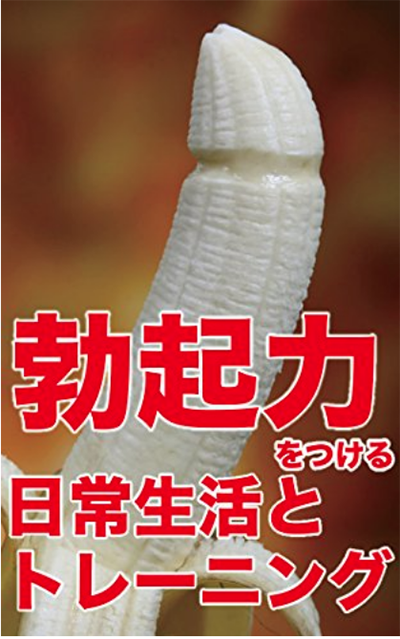19. The "Strong" Radical: 力
The English names of the 力 radical are "strong," "power," and "strength," directly reflecting the meanings of this autonomous kanji:
力 (74: power, ability; strength; force; influence; energy)
In ancient days the character looked more like this:

© Richard Sears
Bronze-script version.
According to Henshall in his newer edition, this shape might have represented an "arm and hand." Alternatively, he says, it may have depicted a "plow" and by association "agricultural work" and therefore "physical strength."
What Is the "Strong" Radical Called in Japanese?
The Japanese primarily call this radical ちから, which matches the Joyo kun-yomi of the 力 kanji. That name applies to the "strong" radical in these characters:
勢 (518: power (esp. with movement); situation; tendency; outward appearance)
努 (555: effort; exertion)
労 (610: labor; trouble; fatigue)
劣 (1928: inferior)
In all those cases the 力 is centrally located. By contrast, it slides to the right in most other Joyo kanji in which it is the on-duty radical. Here's a sampling:
助 (314: to help, rescue; assistant; auxiliary)
動 (362: to move)
勉 (390: effort; exertion; study)
功 (477: merit; success, achievement)
効 (671: effect)
励 (1919: to encourage; strive for; diligent)
This right-side radical is known as りきづくり, where リキ is one of two Joyo on-yomi of the 力 kanji (the other being リョク). As for づくり, that's the voiced version of つくり (旁: side), the name of a radical on the right side of a kanji. (For more on this, see the Radical Terms page and look at "Radical Positions." I'm referring to Position 2.)
Of the 23 Joyo kanji featuring an on-duty 力 radical, including the 力 kanji itself, only this oddball has the radical on the left side:
加 (431: addition, increase; participation; Canada)
Canada—always breaking the rules! The radical name ちから works in this case.
One draws 力 with two strokes. There are no variant shapes, though the radical does become skinny on the side of a kanji.
Photo Credit: Eve Kushner
On the island of Shodoshima in the Inland Sea, I found this display on the old set of the film 24 Eyes. The large writing on the wooden sign is as follows:
力石 (ちからいし: lifting stone)
That doesn't clarify much, though the reading offers a lovely combination of two kun-yomi. The faint writing underneath is as follows:
持ち上げて写真をおとりください
Please take a picture of yourself lifting it up.
持ち上げる (もちあげる: to lift up);
写真 (しゃしん: picture)
This is supposedly a challenge to lift the rocks to prove one's strength, but the stones are fake and extremely light, as you can see from one of the last images in a blog post. The challenge has no connection to the wheel in the background.
The old ad on the wall features the comedian and actor 大村崑 (おおむら こん: 1931–, where 崑 is non-Joyo) and promotes an energy drink called オロナミンC (オロナミン シー), which is still on the market. Comparing ads for this product from 1971 and more recent times is eye-opening.
Of all the Joyo kanji with an on-duty 力 radical, this character conceals it best:
勇 (592: brave; to be encouraged)
That is, looking at the second large kanji in the crab sign, I'm hard-pressed to isolate the 力 radical as a separate entity. Another puzzle is what the company name 東勇 (とうゆう), east + brave, is supposed to mean.
The blue writing on the sign indicates what sort of shop this is:
海鮮問屋 (かいせんどんや: seafood wholesaler)
I'm not sure how one establishment could sell both wholesale fish and ice cream cones, but maybe I don't understand the layout of the space.
Fun Patterns with 力
The 力 radical plays a role in an intriguing pattern. In more than half of the 23 kanji in this category, the radical combines with a Joyo kanji to form the character, as in this example:
加 (431: addition) breaks down as 力 + 口 (20: mouth).
Here's how the pattern plays out for 11 more kanji:
| 助 (314: to help) | 且 (1091: as well as) |
| 勝 (319: win) | 朕 (1603: the royal "we") |
| 動 (362: to move) | 重 (311: heavy) |
| 勉 (390: effort) | 免 (1849: exemption) |
| 功 (477: merit) | 工 (113: manufacturing) |
| 努 (555: effort) | 奴 (1638: guy) |
| 効 (671: effect) | 交 (115: association) |
| 勘 (1100: intuitive perception) | 甚 (1449: extremely) |
| 勲 (1191: outstanding achievement) | 動 (362: to move) |
| 勅 (1600: imperial decree) | 束 (1535: bundle) |
| 劣 (1928: inferior) | 少 (143: small quantity) |
In the next set, the kanji in the left column contain the non-Joyo characters in the right column:
| 勢 (518: power (esp. with movement)) | 埶 (art) |
| 劾 (1068: impeachment) | 亥 (sign of the wild boar) |
| 募 (1787: to collect) | 莫 (must not) |
| 勃 (2113: sudden) | 孛 (comet) |
Photo Credit: Eve Kushner
At a sheep farm in the Rokko Mountains (六甲山, ろっこうさん) above Kobe on Honshu, a sign appeals to people's strength (and vanity?!):
あなたの力を六甲山牧場に!
(Lend) your strength to the Rokkosan farm!
「牧場サポーター」を募集
We need you as a farm supporter
Twice we see 牧場 (ぼくじょう: farm). Aside from 力, the kanji that interests us from a radical 19 point of view is 募 (1787: to collect), which heads off 募集 (ぼしゅう: recruitment). The phrase 「牧場サポーター」を募集 literally means "We recruit 'farm supporters.'" In other words, we need money, and we'd like it to come from you!

Well, now, this is a different sort of strength altogether! The largest word features two instances of 力 (power), once as the radical in 勃 (2113: sudden; rise) and once as a full kanji:
勃起力 (ぼっきりょく: erectile power)
erection (1st 2 kanji) + power
Below that we find these words:
つける (to increase; develop)
日常生活 (にちじょうせいかつ: daily life)
Unfortunately, the title is poorly written, so it's hard to translate directly, but the idea is that you can develop erectile power in daily life through training.
When I searched Amazon Japan for books about erections and erectile dysfunction in order to write essay 2113, I worried about what kinds of overly graphic pictures I would find. What a happy surprise to spot this work with such a creative (and exquisitely detailed) image!
